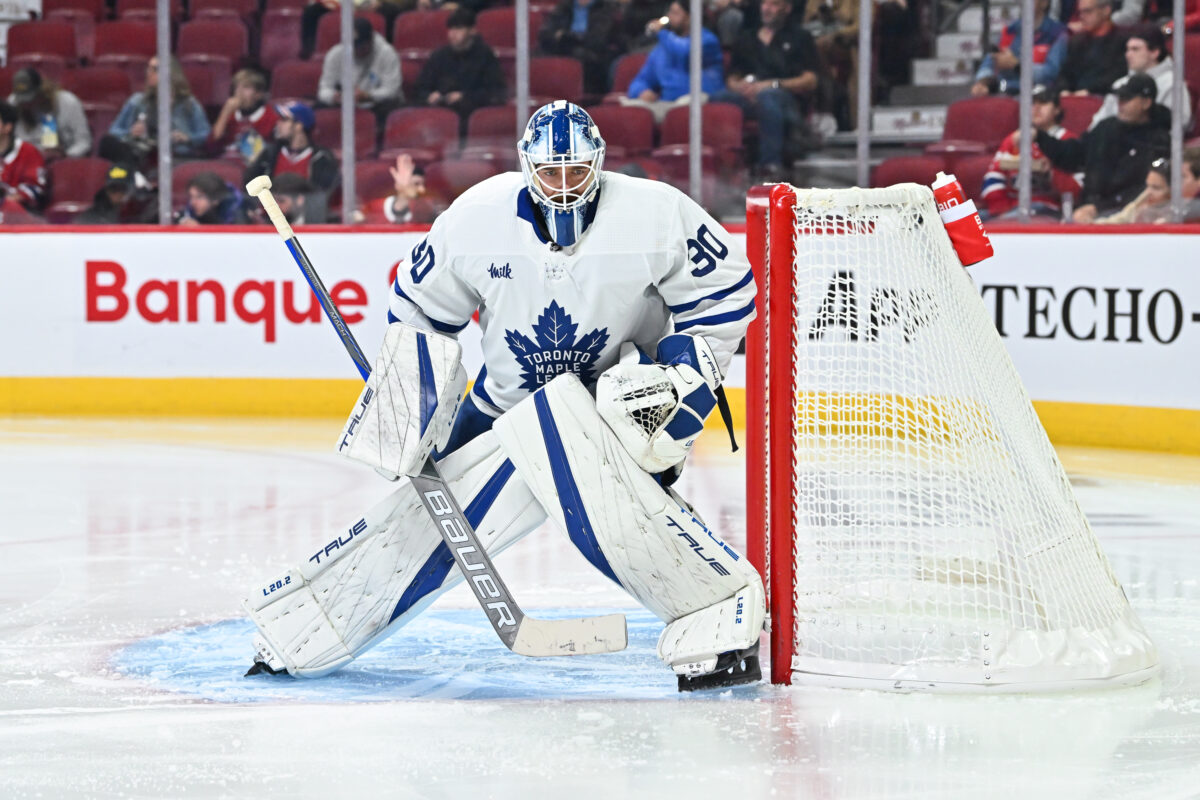Teams in the NHL have been finding more and more ways to work around the salary cap, and the biggest discussion as of late has been surrounding Toronto Maple Leafs’ goaltender Matt Murray. The team announced that he will be placed on long-term injury reserve (LTIR) to start the season, and will remain there indefinitely.
For those unfamiliar with the way LTIR works, CapFriendly has an excellent description:
“When a player has an injury of which they are expected to miss a minimum of 10 NHL games and 24 days in the NHL season, the team can place them on long term injured reserve (LTIR). LTIR can be used to exceed the salary cap. LTIR is a very complicated aspect of the NHL operations and the vast majority of details are not specified in the collective bargaining agreement (CBA).
When a player is placed on LTIR, their cap hit remains on the teams cap payroll and it continues to count as it always did. It also does not provide the club with additional cap-space savings that can be banked for future use while the team operates above the salary cap. Instead, LTIR provides relief if the club’s averaged club salary, or payroll, begins to exceed the upper limit. The amount of relief that the club receives is calculated on the day the player is placed on LTIR. There are three equations that are used to determine the LTIR relief, the first, the basic equation, can be used during the season and during the off-season. The second, the training-camp equation, can be used on the final day of the off-season in preparation for the first day of the season. The third formula is used when the team already has a player on LTIR.
When a player is deemed fit to play, the team must activate them.”
LTIR FAQ, CapFriendly
The Tampa Bay Lightning utilized LTIR very well during their pair of Stanley Cup-winning playoff runs, as they had superstar Nikita Kucherov on LTIR for the entire season, but was removed come playoff time. With this, the Bolts were over the salary cap ceiling and were able to add more depth to finish off the season and activate Kucherov for the playoffs, where the salary cap doesn’t play a factor.
Murray Placed on LTIR
While the length of time Murray will spend on LTIR is still to be determined, it sounds like he may spend the entire season there, which would give the team $4,687,500 in cap relief. This is important to them as they are already over the cap ceiling by approximately $12.3 million. With Murray and Jake Muzzin destined for LTIR, that will leave them with just $2 million to clear out before the 2023-24 season begins.

It is no secret the Leafs have been struggling to deal with the salary cap during the flat cap era. After signing all of their monster deals, the world hit pause and the salary cap did not rise as expected. Since then, many teams have utilized LTIR to get around their cap troubles including the aforementioned Lightning, as well as the Vegas Golden Knights and their handling of Mark Stone.
Related: Maple Leafs, Samsonov Both Benefit From 1-Year Contract
People throw around the term “cap circumvention” when things like this happen, which is exactly what it is. Circumvention is essentially finding a clever way to work around the rule. However, everything these teams are doing has been legal under the collective bargaining agreement (CBA), therefore, even if they wanted to, there is nothing the owners, general managers, or the league can do to stop it at this point.
The problem that has arisen with the Murray situation on the Maple Leafs’ side of things is whether or not he is truly injured. LTIR can be utilized for physical or mental illness and injuries. Unless you have close contact with Murray or the team, you won’t know the full extent of why he is on LTIR or how bad his injury may be. Everybody knows that he is an injury-prone goaltender. He has only played 111 games over the last four seasons.
Where the legitimacy of Murray’s injury comes into question from many is some of the information that came out during the playoffs. In one of the final games the Maple Leafs played in the most recent playoffs, Ilya Samsonov was out with injury and Murray was the backup on the bench for Joseph Woll. Steven Ellis of Daily Faceoff released a Tweet and article following their elimination stating that Murray was healthy and looking forward to the upcoming season. Between Murray being on the bench and this information, many are questioning the integrity of this decision.
There is a possibility that the league takes a look and orders a physical assessment of Murray, but that is something the public would likely never hear about if it were to happen.
Senators’ Retained Salary Should Stay on the Books
When the Leafs acquired Murray, the Senators retained $1,562,500 of his deal, and many Sens fans have been taking to Twitter (or X?) and giving their input. A lot of people think that the Senators should not be accountable for the retained salary if the Maple Leafs are putting him on LTIR. As everyone following the situation knows, that is not the case.
It is easy for the fanbase to think the team should get the cap relief as well, especially with the Senators trying to get as much cap space as possible with their dire need to upgrade the bottom-six. Even after dealing Alex DeBrincat, the Senators are tight on money. To me, it makes perfect sense that the salary is still against the Senators’ cap and not affected by Murray’s placement on LTIR.

When the Senators traded Murray, a large part of this was due to his health. They needed to move the salary to get a more consistent goaltender to lean upon. They were fully aware there was a good chance of him being placed on LTIR and that the cap hit would still count against them. Retaining the salary had nothing to do with his health, performance, or impact on the Maple Leafs. The Senators should not be off the hook, regardless of if he is playing or not.
The Senators were likely hoping the Maple Leafs would buy out Murray’s contract as their second buyout window opened up as it would save them the money, but that wasn’t the case.
This conversation isn’t specific to Murray and the Senators. This kind of situation doesn’t come up very often, and this move has caused some uproar for different reasons, but the highlighted point is that dead cap is dead cap. It doesn’t matter what the player does with the other team – unless the contract is bought out.